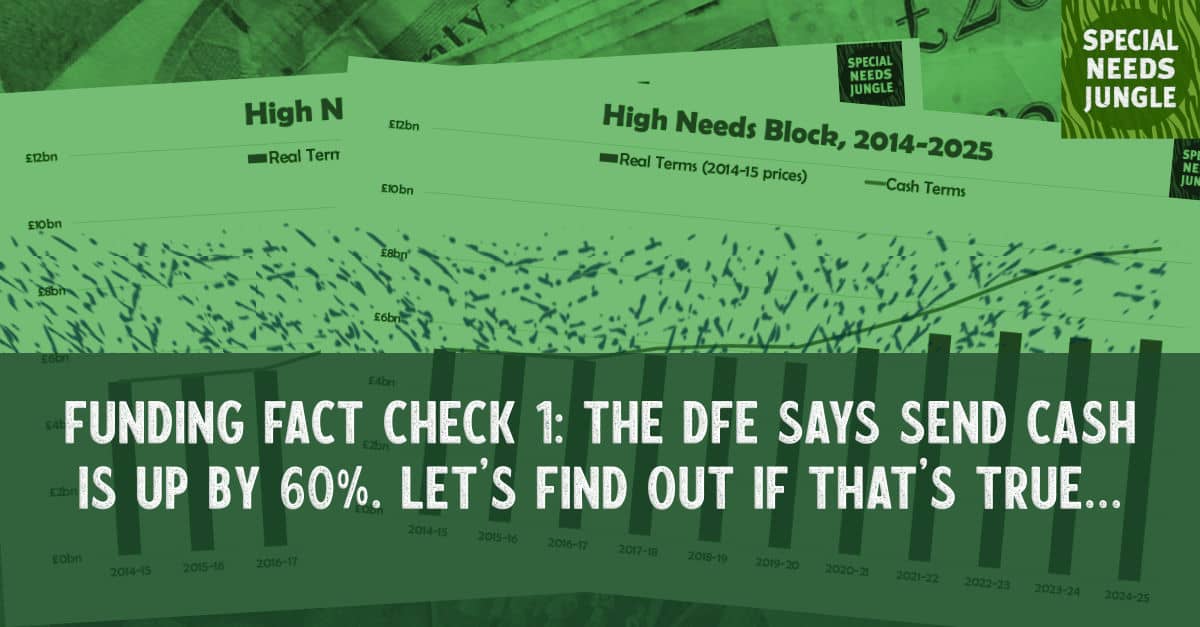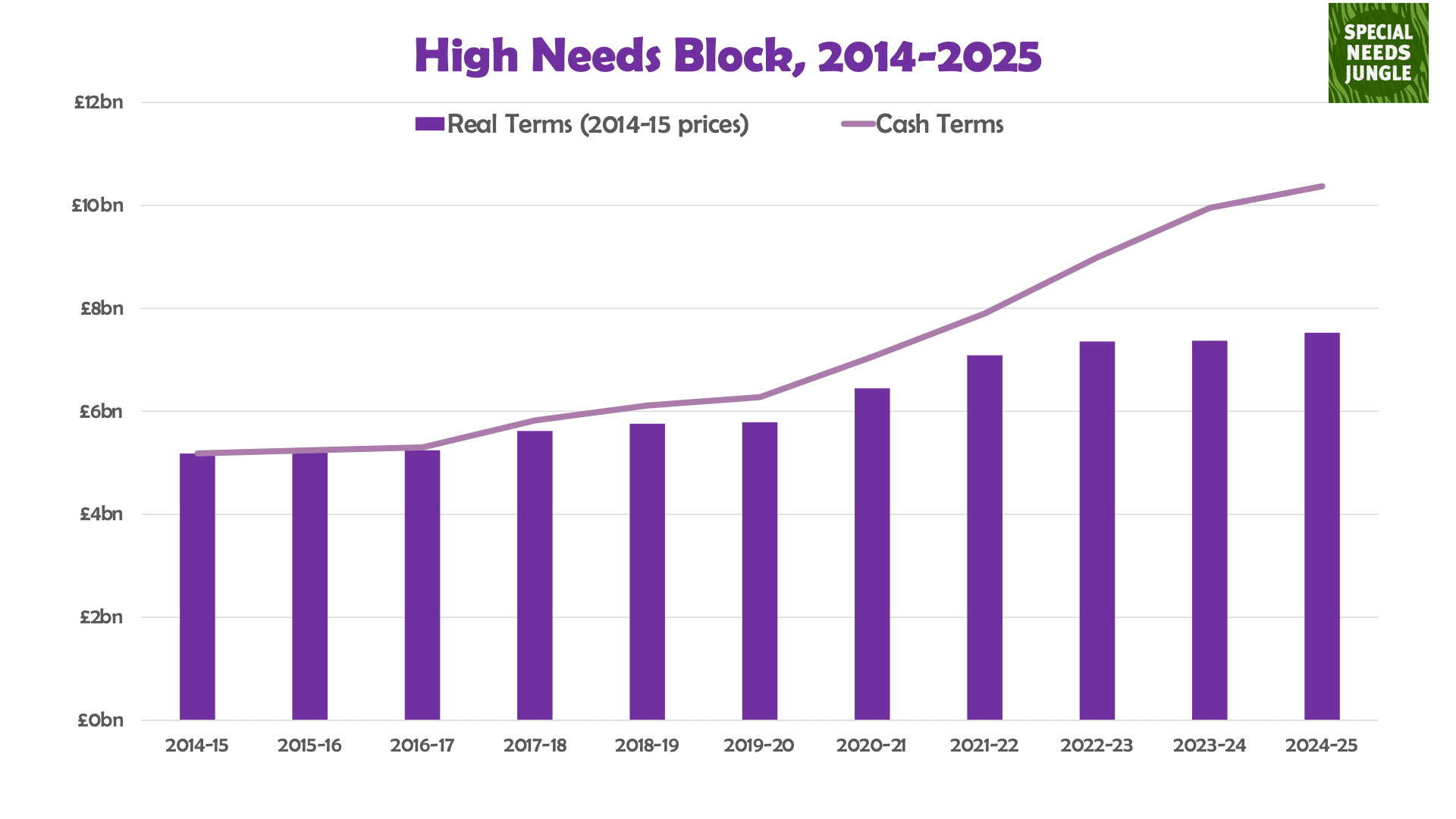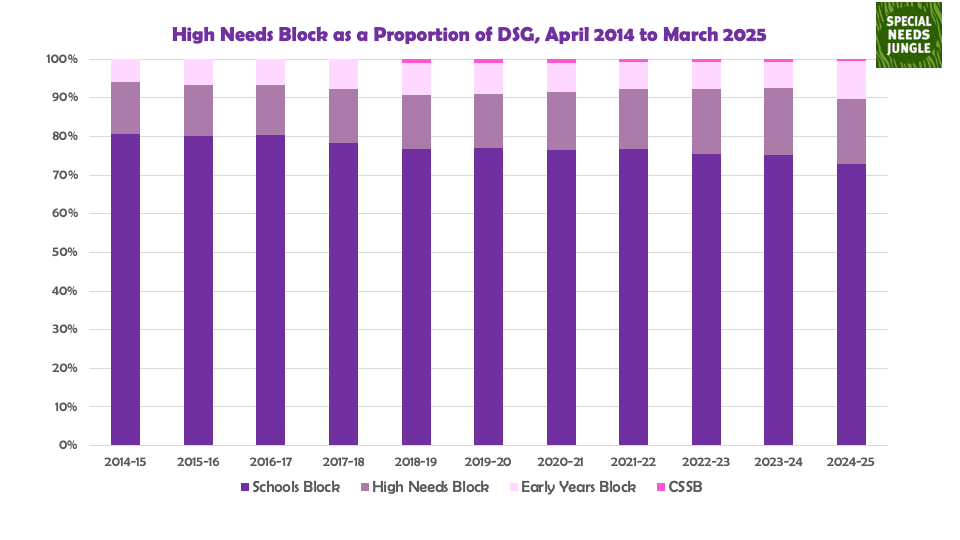
For many of us, school funding is a complex mystery with huge figures bandied around that aren’t easy to understand. Competing claims between local and national government make it even harder to grasp. Helpful as ever, today on SNJ we have the first of three articles where we’ll break down and test these contrasting claims, hopefully helping you get to grips with this complicated but important topic.
There are two very different standpoints on SEND funding. On the one hand, there are school leaders and local government leaders who say that they’ve never been in a worse financial position to support children and young people with SEND. On the other hand, there’s the Department for Education (DfE). It claims SEND funding has never been so plentiful, pointing to a 60% rise in funding for high-needs SEND since 2019.
The Minister for Children & Families, David Johnston, has been in the job for a few months now. In a September 2023 interview, he pointed to this 60% funding increase, saying:
“You find me many areas of government expenditure that have been given 60% more money in the course of this parliament – there aren’t any, which tells you what a priority this government has in this area.”
In a more recent House of Commons debate on SEND funding, he essentially said the same thing:
“…not many Government budgets, under any Government or in any area, have increased by 60%, which demonstrates the Government’s considerable support for and commitment to the area.”
So who’s right here? Let’s look at the DfE’s claim first.
The Department for Education’s claim
What the DfE is claiming is generally accurate, but it’s not the whole story.
Firstly – and it might sound incredible – no one in government knows exactly how much money is spent on SEND nationally each year, particularly spending from mainstream school budgets and the NHS. The number that usually does the rounds when people talk about SEND funding is the High Needs Block of the Dedicated Schools Grant (DSG), and that’s what this 60% increase figure is about. That’s not all SEND funding – it’s just the easiest part to measure.
The DSG is the core pot for school funding. It’s made up of four blocks. The High Needs Block (HNB) is the only funding block focused on SEND.
If your child or young person attends a mainstream school and has an EHCP, it’s likely some of the funding the school receives for them comes from the HNB. If your child goes to a special school, their placement is almost always entirely funded from it. However, most children with SEND are in mainstream schools and only one in four school pupils with SEND has an EHCP. If your child doesn’t have an EHCP, the funding for their SEN support comes almost entirely from school budgets, not from the High Needs Block.
Therefore, for a large majority of children and young people with SEND, the 60% uplift to the High Needs Block makes no direct difference. Nevertheless, it is true to say that the High Needs Block has grown, and that by April 2024, it’ll have grown by over 60%.
No Targets For SEND Cuts? Tell Us Your Experiences
How much is the High Needs Block?
In 2019, the High Needs Block was £6.3 billion. This year, it’s £9.95 billion. At the time of writing, it’s forecast to be around £10.4 billion in April 2024. This is where the 60% increase figure comes from: once the numbers shake out for 2024-25, it’ll probably be more like 65%.
That’s a big increase, but it’s not quite as simple as that.
Firstly, it’s a 65% increase from a low base. Three Parliamentary Select Committee inquiries in 2019 all reported that high-needs funding was nowhere near adequate back then. Arguably, it’s still not adequate now.
Secondly, high inflation has eaten away a lot of the value of this increase. In real terms, the 65% increase from 2019 to 2024 is probably going to feel more like 30% once inflation is factored in – and recent high inflation means that there’s barely been an increase in real terms in the last couple of years. This graph shows how that shakes out.
Thirdly, although the High Needs Block has increased a lot in size, the overall core schools budget has increased in size too. In comparative terms, the High Needs Block is still only a small fraction of the core schools budget. In 2019, roughly £1 in every £7 of the DSG was spent on high-needs SEND. In April 2024, it’ll be £1 in every £6. Check the graph below for more.
And finally, there’s a lot of variety at local level. Some LAs have seen their High Needs Block increase by nearly 90% since 2019; others have had a much lower increase of around 40%. That’s mostly down to the arcane methods that the DfE uses to calculate and allocate high-needs funding.
Lower-funded councils have repeatedly lobbied the DfE to do something about this – you can find some of their lobbying material here. If you have a taste for obscure funding formulae, you can find an academic analysis of the impact of these funding variations here.
But when the DfE says they have pumped more funding into high-needs SEND than ever before, they have a point.
So why are schools and local authorities complaining so loudly? We’ll take a look at that in the next of this series of articles…
* Download the graphs in a PDF
Also read:
Don’t miss a thing!
Don’t miss any posts from SNJ – simply add your email address below. You must click the link in the confirmation email you’ll receive to activate your free subscription.
You can also keep up with us by following our WhatsApp Channel!
Want more? Be an SNJ Patron!
SNJ is a non-profit company and everyone who writes here does so voluntarily. We need your support to help us with costs by donating once or as a regular patron. Regular donors get an exclusive SEND update newsletter as thanks! Find out more here
Related
#Funding #Fact #Check #DfE #SEND #cash #Lets #find #true #Special #Jungle







More Stories
SEND Funding Fact Check 2: Record funding or lack of cash? Which is true—and where’s the money gone? – Special Needs Jungle
Lamination Experiment – Mrs. D’s Corner
Must-Have Containers for Special Education Teachers – Simply Special Education